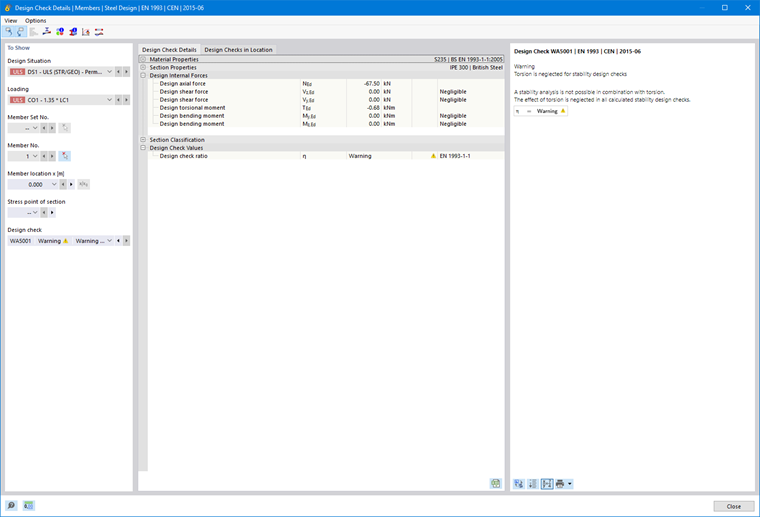In the standards, no torsion is taken into account in the stability analysis for the equivalent member method or the general method. The warning message is a reminder to the user of this fact.
First of all, the magnitude of the torsional stress or moments should be analyzed. Very small torsional moments in the members to be designed often prevent certain design formats. In order to neglect them and suppress the warning, you can change the limit values in the Ultimate Configuration. There is no normative basis for this limit value and therefore, no general specification. Find more information here:
In the case of open cross-sections, it can generally be assumed that the acting torsional moments are not transferred by primary torsion, but by secondary (warping) torsion. In RFEM 6 and RSTAB 9, the internal forces are initially only determined with six degrees of freedom without considering warping. For small acting torsional moments, it seems obvious to neglect the torsional stresses in the design. For large torsional moments, however, a calculation should be carried out with seven degrees of freedom in order to also consider the influence of the warping moment and the secondary torsional shear stresses. You can use this add-on, for example:
